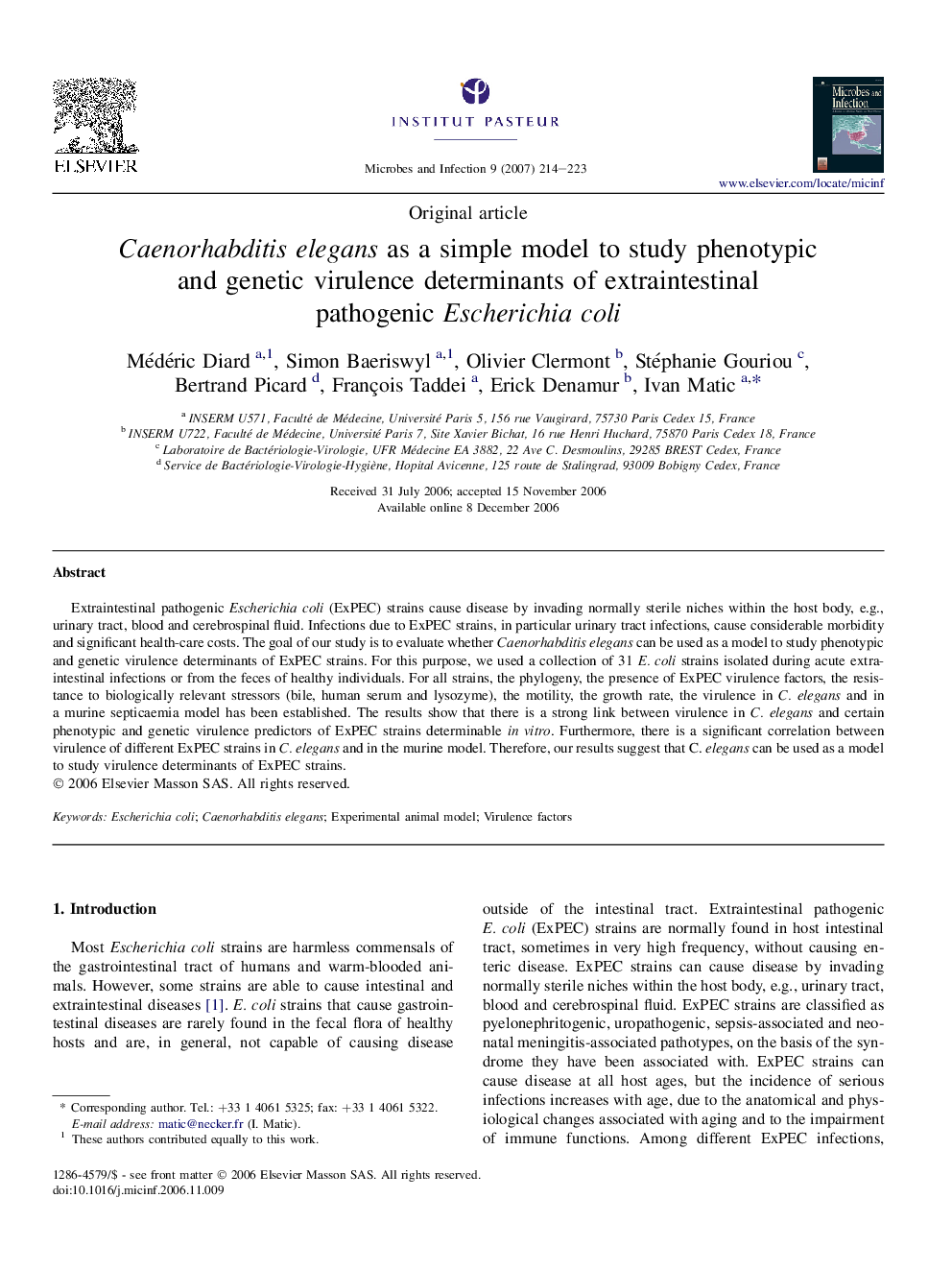| Article ID | Journal | Published Year | Pages | File Type |
|---|---|---|---|---|
| 3416123 | Microbes and Infection | 2007 | 10 Pages |
Extraintestinal pathogenic Escherichia coli (ExPEC) strains cause disease by invading normally sterile niches within the host body, e.g., urinary tract, blood and cerebrospinal fluid. Infections due to ExPEC strains, in particular urinary tract infections, cause considerable morbidity and significant health-care costs. The goal of our study is to evaluate whether Caenorhabditis elegans can be used as a model to study phenotypic and genetic virulence determinants of ExPEC strains. For this purpose, we used a collection of 31 E. coli strains isolated during acute extra-intestinal infections or from the feces of healthy individuals. For all strains, the phylogeny, the presence of ExPEC virulence factors, the resistance to biologically relevant stressors (bile, human serum and lysozyme), the motility, the growth rate, the virulence in C. elegans and in a murine septicaemia model has been established. The results show that there is a strong link between virulence in C. elegans and certain phenotypic and genetic virulence predictors of ExPEC strains determinable in vitro. Furthermore, there is a significant correlation between virulence of different ExPEC strains in C. elegans and in the murine model. Therefore, our results suggest that C. elegans can be used as a model to study virulence determinants of ExPEC strains.
